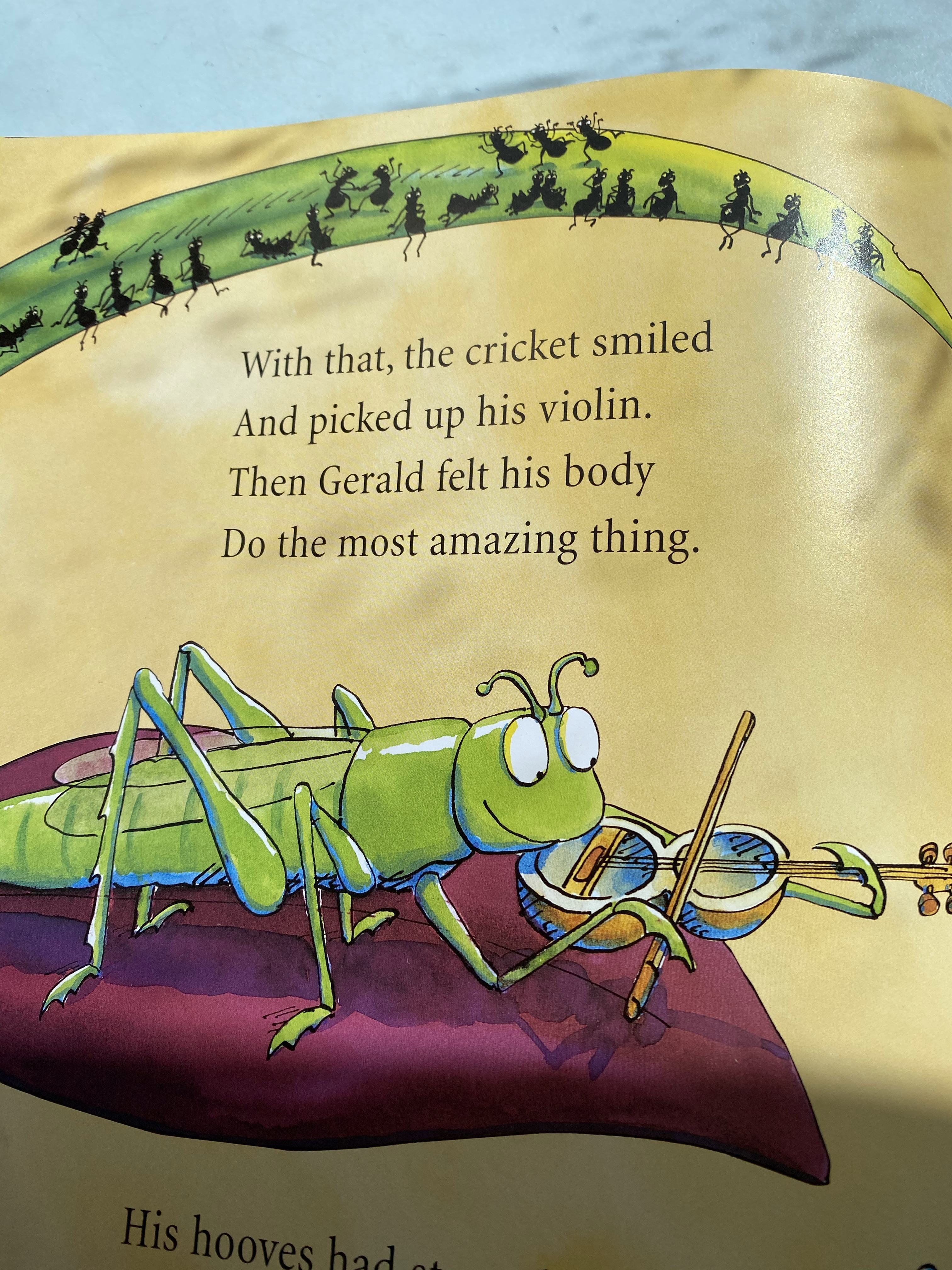“Giraffes Can’t Dance,” penned by Giles Andreae and illustrated by Guy Parker-Rees, is more than just a children’s book; it’s an anthem for anyone who’s ever felt out of step. This delightful story revolves around Gerald the Giraffe, a character who yearns to participate in the annual Jungle Dance but believes he lacks the grace of his fellow animals.
 Gerald the Giraffe looking at other animals dancing
Gerald the Giraffe looking at other animals dancing
Gerald’s journey begins with hesitation. The jungle animals, each with their unique style, seem to glide effortlessly across the dance floor. Monkeys cha-cha, lions tango, and warthogs waltz – a vibrant display of rhythmic talent surrounds Gerald. However, when Gerald attempts to join in, his long legs and clumsy frame lead to stumbles and laughter. This moment poignantly captures the sting of feeling different and the fear of judgment, a relatable experience for children and adults alike.
 Animals laughing at Gerald trying to dance
Animals laughing at Gerald trying to dance
The narrative beautifully addresses the sensitive issue of bullying and self-doubt. Gerald’s embarrassment and isolation are palpable as he’s ridiculed for his perceived lack of dancing ability. The book doesn’t shy away from showing the hurt caused by unkind words. Yet, “Giraffes Can’t Dance” is ultimately a story of hope and self-discovery. In a turning point, a wise cricket, playing a violin, helps Gerald realize that he simply needs to find his own music. This insightful cricket encourages Gerald to listen to the sounds of nature – the rustling grass, the swaying trees – and to dance to that rhythm.
 Gerald finding his own dance style
Gerald finding his own dance style
This is where the magic truly happens. Gerald begins to move in a way that is authentic to him, a dance that is uniquely his own. He discovers that dancing isn’t about conforming to others’ expectations but about expressing yourself freely and joyfully. The animals, initially critical, are soon captivated by Gerald’s unique and passionate performance. They realize that being different isn’t a weakness but a strength, and that there’s beauty in celebrating individual styles.
 Gerald dancing confidently with other animals watching in awe
Gerald dancing confidently with other animals watching in awe
“Giraffes Can’t Dance” subtly introduces children to the concept of diverse musical styles through the animals’ dances, making it a wonderful gateway to musical exploration. The rhythmic verse of the story itself enhances its musicality, making it a joy to read aloud. Beyond the engaging story and vibrant illustrations, the book imparts a powerful message about self-acceptance, resilience, and the importance of finding your own voice – or in Gerald’s case, his own dance. It’s a reminder that everyone has their own rhythm, and the most beautiful dance is the one that comes from within. Whether you’re reading it at bedtime or using it as a springboard for dance and movement activities, “Giraffes Can’t Dance” is a book that will be cherished and reread for years to come, inspiring everyone to find their own dance floor, wherever that may be.

